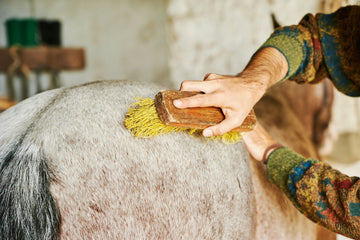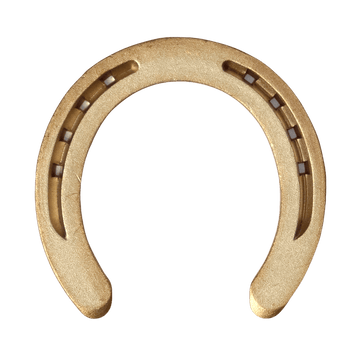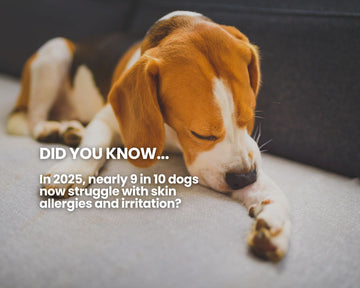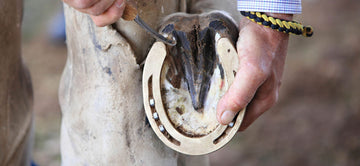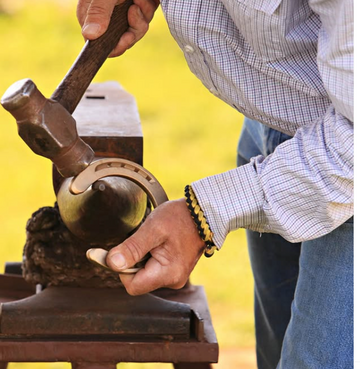Maintaining a horse's coat and overall health involves a variety of horse grooming tools, with brushes being at the forefront.
Understanding the different types of horse brushes and their specific uses is crucial for effective grooming.
This guide provides insights into the essential types of brushes every horse owner should know, emphasizing their importance in achieving grooming success.
Why Horse Brushes are Important for Grooming
Horse brushes play a vital role in the grooming process for several reasons:
-
Cleaning the Coat: Regular brushing helps remove dirt, mud, and debris, ensuring your horse's coat remains clean and healthy. A clean coat not only looks good but also contributes to skin health by preventing irritations caused by dirt buildup.
-
Promoting Natural Oils: Grooming helps distribute natural oils across the horse's coat, promoting a shiny and well-maintained appearance. These oils are essential for maintaining coat health and hydration. The right horse shampoo can also help maintain a healthy coat.
-
Preventing Skin Issues: Regular brushing can help prevent itchiness and irritation. By removing loose hair and debris, you reduce the likelihood of skin conditions caused by dirt accumulation.
-
Strengthening the Bond: Grooming is a wonderful way to bond with your horse. It can help to calm anxious horses and build trust between you and your equine companion.
-
Health Monitoring: Grooming sessions allow you to check your horse's skin for any unusual lumps, cuts, or irritations, facilitating early detection of potential health issues.
Choosing the Right Horse Brushes
Selecting the appropriate brushes for your horse is essential. Here are key considerations:
-
Coat Type: Different horses have different coat types—short, long, thick, or thin. Understanding your horse’s coat type will guide your brush selection.
-
Sensitivity: Some horses have sensitive skin and may require softer brushes, while others can tolerate firmer bristles for more thorough cleaning.
-
Material Quality: Look for brushes made from durable materials, such as horse hair, that are easy to clean. High-quality brushes will last longer and perform better.
-
Functionality: Consider what you want each brush to accomplish, whether it’s removing dirt, adding shine, or detangling hair.
Types of Horse Brushes
1. Dandy Brush (Hard Brush)
Description: The dandy brush is a hard brush characterized by stiff, long bristles. It is designed to capture loose dirt and hair effectively.
Purpose:
-
Used primarily to remove excess dirt and hair from the horse’s body, particularly after using a curry comb.
-
Ideal for cleaning dried mud and sweat from unclipped horses.
Material: Typically made from plastic or natural fibers, dandy brushes are robust and designed to withstand vigorous use.
Usage: Use the dandy brush in a flicking motion, directing dirt away from the horse and into the ground. This method is particularly effective on areas prone to heavy soiling, such as the legs and belly. To maintain the dandy brush, use a metal curry comb to remove dirt and excess hair from the bristles.
2. Body Brush
Description: The body brush features softer bristles and is used to remove dust and grease from the horse’s coat.
Purpose:
-
Helps to produce a shine while distributing natural oils throughout the coat.
-
Essential for daily grooming to maintain a healthy, attractive appearance.
Material: Body brushes can be made from natural fibers, such as horse hair or goat hair, or soft synthetic fibers.
Usage: Use a body brush in circular motions along the horse’s body, allowing it to glide over the coat. This action helps to lift dirt while polishing the coat, leaving it looking healthy and vibrant.
3. Soft Brush
Description: A soft brush has fine, flexible, soft bristles designed to gently remove fine dust and dirt.
Purpose:
-
Perfect for bringing out the horse’s natural shine and distributing oils evenly.
-
Ideal for sensitive areas, such as the face and legs.
Material: Soft brushes are typically made from organic or synthetic bristles that provide a gentle touch.
Usage: Use the soft brush lightly across the coat, particularly on areas that are more sensitive. This method helps to ensure comfort while maintaining cleanliness.
4. Shedding Blade
Description: A shedding blade is a specialized grooming tool designed to remove dead hair, particularly during the shedding season. It features a metal blade with serrated edges that effectively pull out loose winter coat hair.
Purpose:
-
Essential for removing dead hair and preventing matting and tangling of the horse’s coat.
-
Helps to keep the horse’s coat looking smooth and healthy during seasonal changes.
Material: Typically made of metal, shedding blades are durable and designed to handle the rigors of grooming.
Usage: To use a shedding blade, gently run it along the horse’s body in the direction of hair growth. Be careful not to apply too much pressure to avoid causing discomfort. Regular use during the shedding season will help maintain a clean and shiny coat.
5. Grooming Mitt
Description: A grooming mitt is a versatile curry comb that fits over your hand, providing a more intimate and gentle grooming experience. Made from soft, flexible materials, it features short or long grooves on one side to help loosen dirt and dander.
Purpose:
-
Ideal for sensitive areas such as the face, legs, and belly.
-
Enhances the grooming experience by allowing for gentle, circular motions that can be soothing for the horse.
Material: Grooming mitts are usually made from rubber or soft plastic, ensuring they are gentle on the horse’s skin.
Usage: Slip the grooming mitt onto your hand and gently rub it along the horse’s body in circular motions. Focus on areas that are prone to sensitivity or irritation. The mitt can be used in conjunction with other grooming tools to provide a thorough and relaxing grooming session.
By following these guidelines, the new sections will seamlessly blend with the existing content, providing a comprehensive guide to horse brushes and grooming tools.
Grooming Tools for Specific Areas
1. Face and Leg Grooming
Face Brush:
-
A small, soft brush used specifically for brushing the horse’s face and delicate areas around the eyes and muzzle.
-
Helps remove dirt and dust gently without causing discomfort.
Leg Brush:
-
A stiff-bristled brush designed for the legs, where dirt and debris tend to accumulate.
-
Promotes a healthy coat and prevents irritation caused by dirt buildup.
2. Mane and Tail Grooming
Mane Brush:
-
A wide-tooth comb or brush specifically designed to remove knots and tangles from the horse’s mane.
-
Helps prevent breakage and keeps the mane looking tidy.
Tail Brush:
-
A long, stiff-bristled brush used to remove dirt and dust from the horse’s tail.
-
Essential for maintaining a healthy tail that is free of tangles.
Additional Grooming Essentials
1. Curry Comb
Description: A curry comb is a short-toothed tool made from rubber, plastic, or copper, often referred to as a rubber curry comb, plastic curry comb, or copper curry comb horse brush, that loosens dirt, hair, and other particles.
Purpose:
-
Ideal for removing dirt and debris from the horse’s coat, promoting a healthy shine.
-
Serves as the first step in the grooming process, prepping the coat for deeper cleaning.
Usage: Use the curry comb in circular motions to lift dirt and debris, making subsequent brushing more effective.
2. Hoof Pick
Description: A hoof pick is a specialized tool designed for cleaning a horse’s hooves.
Purpose:
-
Essential for maintaining hoof health by removing debris, dirt, and stones.
-
Regular use helps prevent conditions like thrush and laminitis.
Usage: Gently pick out the hoof, starting at the heel and working towards the toe. Be cautious not to injure the sensitive structures within the hoof. When finished cleaning the hoof, use a quality hoof paste to keep your horse's hooves looking and feeling great.
Caring for Your Horse Brushes
Cleaning Your Brushes
-
Regular Maintenance: Clean your horse brushes after each grooming session to prevent the buildup of dirt and bacteria. This practice not only prolongs the life of your brushes but also maintains hygiene. Use a metal curry comb to remove dirt and excess hair from the bristles of your brushes.
-
Washing: Use warm water and a mild soap solution to clean your brushes. Rinse thoroughly to remove all soap residue, as it can irritate your horse’s skin if left behind.
-
Drying: Allow your brushes to air dry completely before storing them. This helps prevent the growth of mold and bacteria.
-
Storage: Store brushes in a dry, clean area, preferably in a grooming tote. Keeping them organized will make your grooming routine more efficient.
Frequently Asked Questions
What are the different types of brushes for horses?
The primary types of brushes for horses include dandy brushes, body brushes, soft brushes, face brushes, mane brushes, and tail brushes. Each serves a specific purpose in the grooming process.
What does a dandy brush do?
A dandy brush is used to remove excess dirt, mud, and hair from a horse's body. It features stiff bristles that effectively clean the coat after using a curry comb.
What is the metal horse brush called?
The metal horse brush typically refers to a shedding blade, which is used to remove loose hair, especially during shedding seasons.
Why is a horse brush called a curry comb?
A curry comb is named for its design and function—'curry' refers to the act of cleaning, while 'comb' indicates its comb-like structure that loosens dirt and hair.
The Essential Guide to Types of Horse Brushes Conclusion
Understanding the various types of horse brushes and their specific uses is essential for effective grooming. Each brush plays a crucial role in maintaining your horse's health and appearance, from removing dirt and debris to promoting a shiny coat.
By selecting the right brushes and using them properly, you can ensure your horse stays clean, comfortable, and looking its best.
Regular grooming not only contributes to your horse's overall well-being but also strengthens the bond between you and your equine companion.
Investing in high-quality horse grooming tools will make your grooming sessions more enjoyable and effective, paving the way for a healthy and happy horse.

